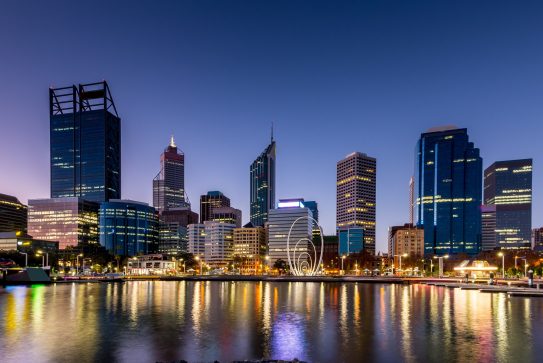The Albanese Government has sought to boost its economic credentials and lock in support with middle Australia by announcing a small Budget surplus and a spending blitz to help ease cost-of-living pressures.
Avoiding any large-scale structural reform or tax changes, Treasurer Jim Chalmers instead focused on generous spending promises targeting health, welfare, energy, and housing.
Mr Chalmers’ 2nd Budget also announced measures to boost wages and skills, while hailing a big fall in inflation to less than 3 percent by July 1 next year.
But the economic news is not all positive with growth forecasts to fall next year as global economies battle high inflation.
In a speech that was well received by a packed public gallery, Mr Chalmers also warned voters of the massive structural challenges facing the nation – citing increased health, aged care, NDIS, defence and interest payments.
Global companies doing business in Australia will be hit with a new minimum tax of 15 percent on both domestic and global earnings while the Treasurer confirmed a $2.4 billion hike in the Petroleum Resource Rent Tax
Just over $14 billion is being spent on a cost-of-living package that will be popular with struggling families whose household budgets are under pressure.
Responding to sustained efforts from welfare groups the Government has boosted Jobseeker payments by $40 a fortnight. And people over the age of 55 will receive an extra top-up of $92 a fortnight in their JobSeeker payment.
With energy bills soaring for many struggling families, around 5 million Australians will also receive a $500 rebate on the cost of gas and electricity.
The Treasurer also hailed a $5.7 billion boost to Medicare including tripling the bulk billing incentive targeted at children, pensioners and other concession card holders – a move likely to be popular across the nation.
Amid calls for greater investments in clean energy, the green hydrogen sector will receive a $2 billion boost through a “Hydrogen Headstart” program which will pay credit paid on a per-kilogram basis for production. The initiative will be welcomed by ‘green’ investors who have been urging Canberra to match the United States’ incentive scheme, the Inflation Reduction Act.
The Government is also rolling out a $1.3 billion scheme to encourage households to install solar panels and double glazing as part of an energy efficiency push.
The union movement has scored a win with the Budget announcing $400 million will be spent on a Net Zero Authority, designed to help workers transition from coal and other resource-intensive industries to new ‘green’ jobs.
The impact of global economic headwinds – and the collapse of several banks in the United States – is reflected in a sombre outlook for economic growth. Australia’s GDP is forecast to fall to just 1.5 percent next year with high inflation and the post-pandemic slowdown all taking their toll.
Addressing the Parliament, the Treasurer warned Australians to brace for tougher times. “The global economy is slowing due to persistent inflation, higher interest rates and financial sector strains. Outside of the pandemic and the GFC, the next two years are expected to be the weakest for global growth in over two decades.”
Nonetheless, tonight’s Budget marks a significant moment in Labor’s efforts to establish its economic management credentials.
Not since Paul Keating has a Labor Treasurer delivered a Budget surplus. Dr Chalmers is forecasting a modest but politically important $4.3 billion surplus in 2022/23 while the Budget slips back into the red, to the tune of $13.9 billion, the following year.
According to Treasury this represents an impressive $82.1 billion improvement in around 12 months – most of this due to stronger than forecast commodity prices.
Inflation – which soared to nearly 8 percent – is forecast to drop from 6 percent this financial year to 2.75 percent in 2024/25. This places it within the Reserve Bank’s target range for the first time in years.
Business has welcomed the restraint in pocketing the Budget surplus – with BCA chief executive, Jennifer Westacott saying, “This is a solid budget which balances the need for cost of living relief with modest fiscal consolidation and some important initiatives to grow the economy,” – however concerns remain about future pressures forecast for the economy and the need for structural change.
Steve Lewis, Senior Advisor, SEC Newgate Communications – [email protected]
Claire Bremner, Partner, SEC Newgate Communications – [email protected]
Sara Hourigan, Partner, SEC Newgate Communications – [email protected]
SEC Newgate’s integrated approach draws on our national team’s experience and networks to deliver a full service offering.

